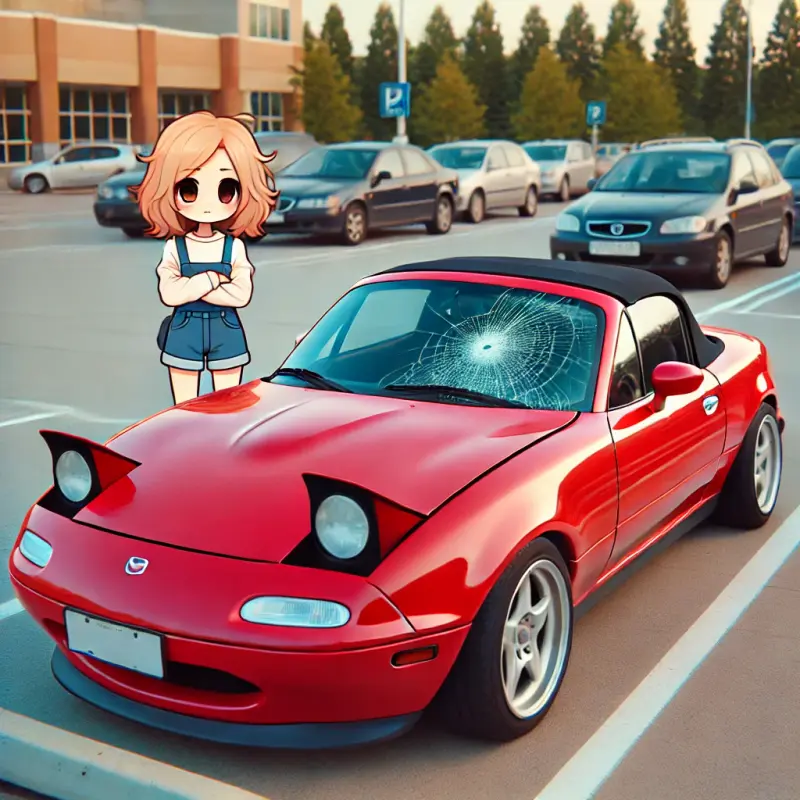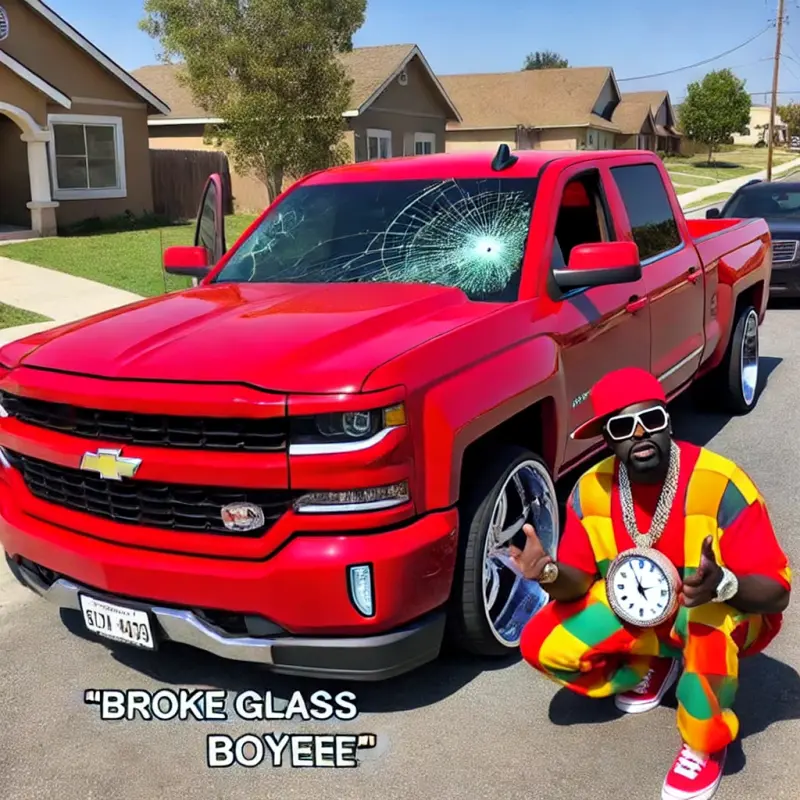In the world of automotive care, one often overlooked component is the windscreen. Many drivers may shrug off a small crack or chip, thinking it’s no big deal. However, this couldn’t be further from the truth. Understanding the implications of ignoring a damaged windscreen can save you time, money, and perhaps even lives.
The Importance of Your Windscreen: A Key Safety Feature
Why You Should Never Ignore a Cracked or Chipped Windscreen
Your windscreen isn’t just a piece of glass; it plays a vital role in the structural integrity of your vehicle. It helps support the roof and is essential for the deployment of airbags in case of an accident. Ignoring any damage can compromise the safety features designed to protect you.
Structural Integrity: A cracked windscreen can weaken your vehicle's structure. Airbag Deployment: A damaged windscreen may hinder airbag deployment during collisions. Visibility Issues: Chips and cracks can obstruct your view, increasing the risk of accidents.Understanding Windshield Damage
Types of Cracks and Chips
Windscreens can suffer various types of damage, each with different implications:
- Star Breaks: Small chips that radiate outward like a star. Bullseye Breaks: Circular cracks resembling a bullseye. Combination Breaks: A mix of cracks that could worsen over time.
Knowing these types will help you assess whether immediate action is required.
How Windscreen Damage Occurs
From road debris to temperature changes, several factors contribute to windshield damage:
- Road Conditions: Gravel roads increase debris exposure. Temperature Fluctuations: Rapid changes in temperature can cause glass stress.
Understanding these factors helps drivers take preventive measures.
The Risks of Ignoring Windshield Damage
Compromised Safety Features
When considering why you should never ignore a cracked or chipped windscreen, one must think about safety features:
Rollover Protection: The windscreen provides essential support during rollovers. Passenger Protection: An intact windscreen keeps passengers secure inside the vehicle.Ignoring damage could lead to disastrous consequences during an accident.
Legal Ramifications
Driving with a damaged windscreen can result in legal trouble:
- Traffic Violations: Many jurisdictions issue fines for unsafe vehicles. Insurance Complications: If involved in an accident, insurance may deny claims if there's pre-existing damage.
Staying on top of windshield repairs protects not just your safety but also your wallet.
When to Replace vs. Repair Your Windscreen
Assessing Windshield Damage Severity
Not all damage necessitates replacement; sometimes repair is sufficient:
- If the crack is smaller than 6 inches and not in the driver's line of sight, repair is possible. Larger cracks require complete replacement to ensure safety.
Deciding whether to choose windshield replacement or auto glass replacement depends on multiple factors that every driver should know.
Cost Implications of Repairs vs. Replacements
Generally speaking, repairing a chip costs significantly less than replacing an entire windshield:
| Service Type | Average Cost | |------------------------|----------------| | Windshield Repair | $50 - $150 | | Windshield Replacement | $300 - $1000 |
Investing in repair now can save you from greater expenses later down the line.

The Process of Windshield Replacement and Repair
What Happens During Repair?
Repairing a windshield usually involves injecting resin into the damaged area:
The technician cleans out any debris from the crack. Resin is injected under pressure to fill the damaged area completely. The resin is cured using UV light.This process restores strength without having to replace the entire glass panel.
What to Expect During Replacement?
Windshield replacement involves removing the old glass entirely:
Technicians use specialized tools to remove broken glass safely. They prepare and clean the frame where new glass will be installed. The new windscreen is fitted using high-quality adhesives for security.Expect this process to take around one to two hours based on complexity and technician experience.
DIY Repairs vs Professional Services
Can You Fix It Yourself? Pros and Cons
While DIY kits are available for minor repairs, they come with their own sets of challenges:
Pros:
- Cost-effective Quick solutions for minor chips
Cons:
- Requires precision Poor execution could worsen damage
Given these pros and cons, weigh your options carefully before proceeding with DIY repairs.
Why Professional Services Are Recommended?
Professional services offer expertise that DIY methods often lack:
Trained technicians have experience assessing damage severity accurately. Professionals use high-quality materials that enhance durability and visibility post-repair/replacement.Ultimately, investing in professional services assures optimal outcomes while adhering to safety standards.
Maintaining Your Windscreen After Repairs or Replacement
How To Care For Your Windscreen Post-Service?
Once you've had your windshield repaired or replaced, specific maintenance tips ensure longevity:
Avoid slamming doors which creates vibrations damaging seals. Don’t wash your car within 24 hours after installation; allow adhesives ample time to set fully. Regularly inspect for new cracks after driving on rough terrain or extreme weather conditions.Such maintenance practices prolong your investment's life span while enhancing Oak Ridge Auto Glass Replacement safety when on-road conditions change unexpectedly.
Common Myths About Windscreens Debunked
Myth 1: “A small chip will fix itself over time.”
This myth couldn't be further from reality—chips don't self-repair! Instead, they expand under temperature changes or vibrations from driving—prompting immediate action upon noticing any damage!
Myth 2: “I don't drive much; it’s not important.”
Whether you're commuting daily or rarely hitting highways doesn't matter—every trip carries risks! An unnoticed crack can turn dangerous quickly if left unattended—even if you're just running errands around town!

FAQs About Cracked or Chipped Windscreens
FAQ 1: Can I still drive with a cracked windshield?
Yes—but it's unwise! Driving with compromised visibility heightens accident risks significantly! Seek professional help immediately rather than risking yourself unnecessarily!
FAQ 2: How long does it take to repair my windshield?
Typically—20 minutes up until an hour depending on severity! Scheduling appointments ahead ensures minimal disruptions during busy days ahead!
FAQ 3: Will my insurance cover windshield repair?
Most policies do cover some level—check yours thoroughly beforehand! Some states mandate coverage regardless if damages arise due negligence!
FAQ 4: Is it safe to use my car after getting my windshield replaced?
Absolutely! Technicians prioritize adhering strictly within safety regulations ensuring proper installation takes place before handing back keys!
FAQ 5: What happens if I wait too long for repairs?
Waiting only exacerbates issues leading towards costly replacements instead—including potential legal ramifications arising due unsafe driving practices!
FAQ 6: How often should I check my windshield for damages?
Make it routine—check monthly when cleaning cars becomes necessary! Keeping vigilant ensures no issue escalates beyond manageable fixes!
Conclusion
In conclusion, understanding why you should never ignore a cracked or chipped windscreen goes beyond aesthetics—it’s truly about safety and well-being both personally as well as legally speaking! Whether deciding between repairs versus replacements or seeking professional assistance over DIY kits requires informed choices every driver must make thoughtfully along their journeys ahead! Safeguarding ourselves begins by prioritizing crucial aspects like maintaining our vehicles’ integrity—including windscreens especially susceptible risk factors involved day-to-day driving experiences faced out there today!
Remember—the moment you notice any form of damage take prompt actions needed immediately rather than letting those problems fester longer where more significant issues arise later down line creating unnecessary headaches altogether!